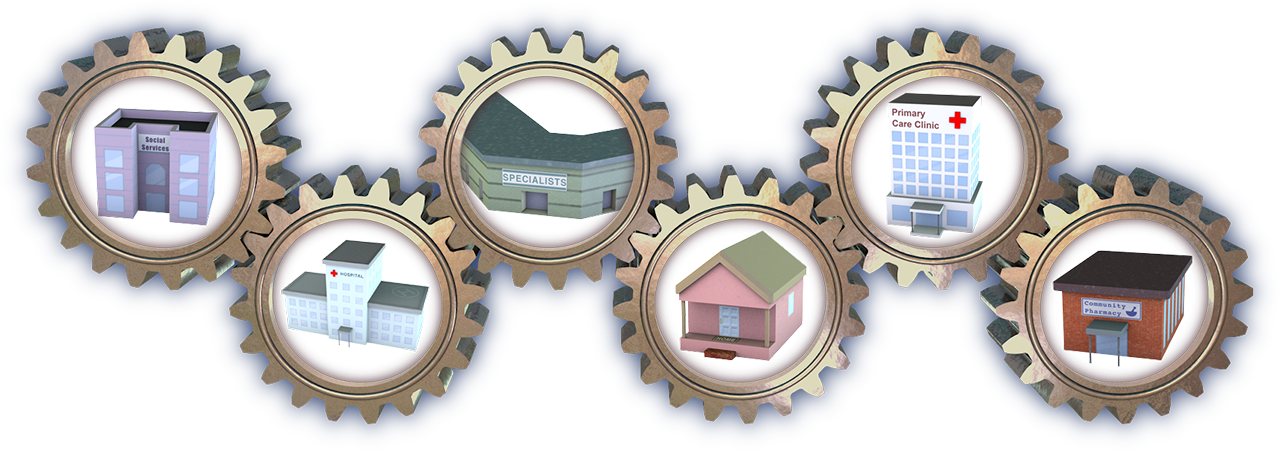
Managing patient health is a complex task, requiring the support of a multi-disciplinary healthcare team. Traditionally healthcare providers have worked independently.

However, the movement towards team-based care and outcomes-based reimbursement requires collaboration between healthcare providers to meet patient-care goals.
Team-based care can be defined as:
“…the provision of health services to individuals, families, and/or their communities by at least two healthcare providers who work collaboratively with patients to accomplish shared goals within and across multiple settings to achieve coordinated, high-quality care.”1-4
In team-based care, the services offered by one provider differ from—but complement—those supplied by another facility. All of the providers combine their specific skills and knowledge to achieve a common goal: providing optimal healthcare for their patients.
Team-based care is complex. Like the gears in a clock, all of the moving pieces must work together.

It has been said that it “takes a village” to raise a child. This metaphor applies to the healthcare industry, too: it takes a medical neighborhood to successfully care for patients. A medical neighborhood:
“…consists of the patient‘s primary care provider and the other healthcare providers who provide health services to patients within it, along with community and service organizations. It is important to note that the neighborhood is not necessarily a geographic construct, but instead of set of relationships revolving around the patient and his or her healthcare needs.”5
While the healthcare providers who care for a patient vary depending upon the situation, the principles of team-based care remain the same regardless of the provider. Researchers at the UNC Eshelman School of Pharmacy interviewed community pharmacists, prescribers, and care managers to understand how these principles impact medical neighborhoods like the one shown below.